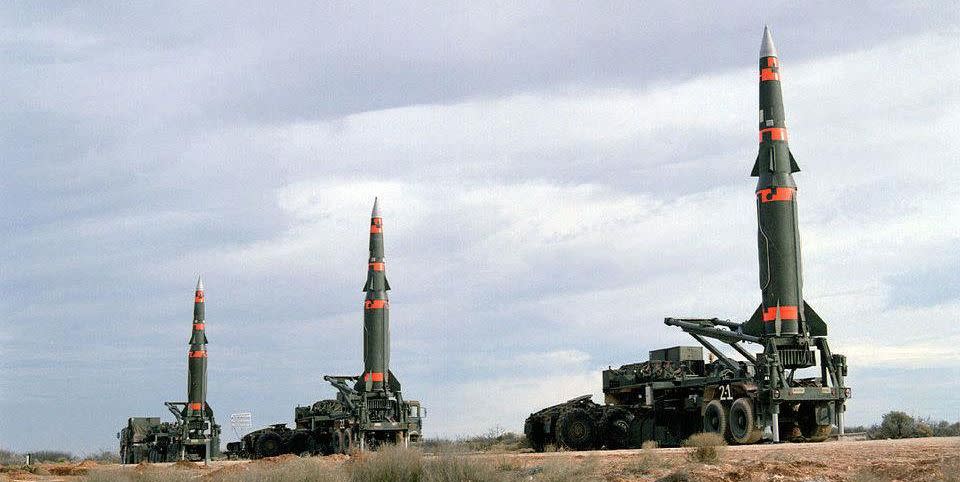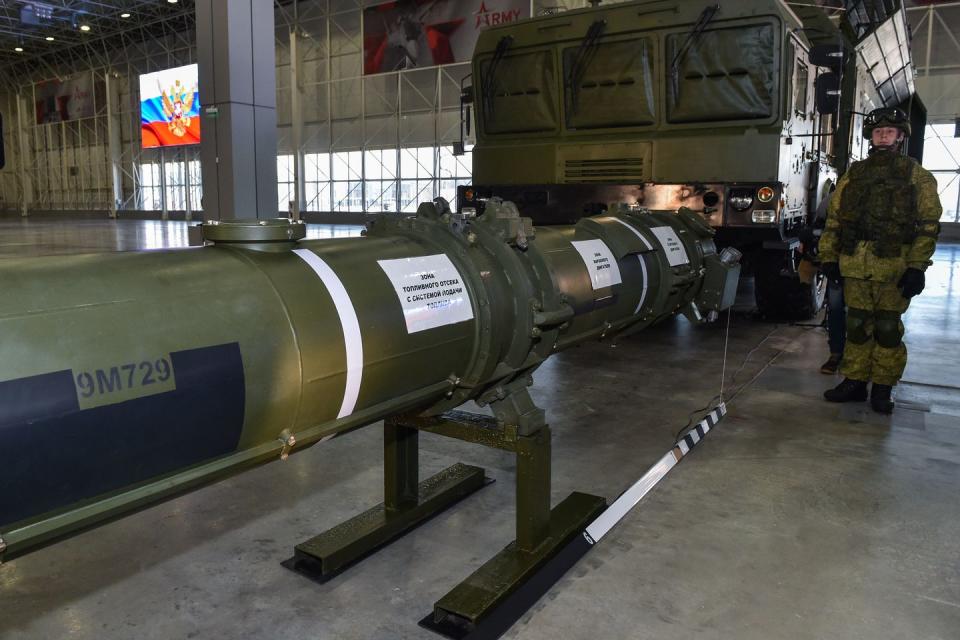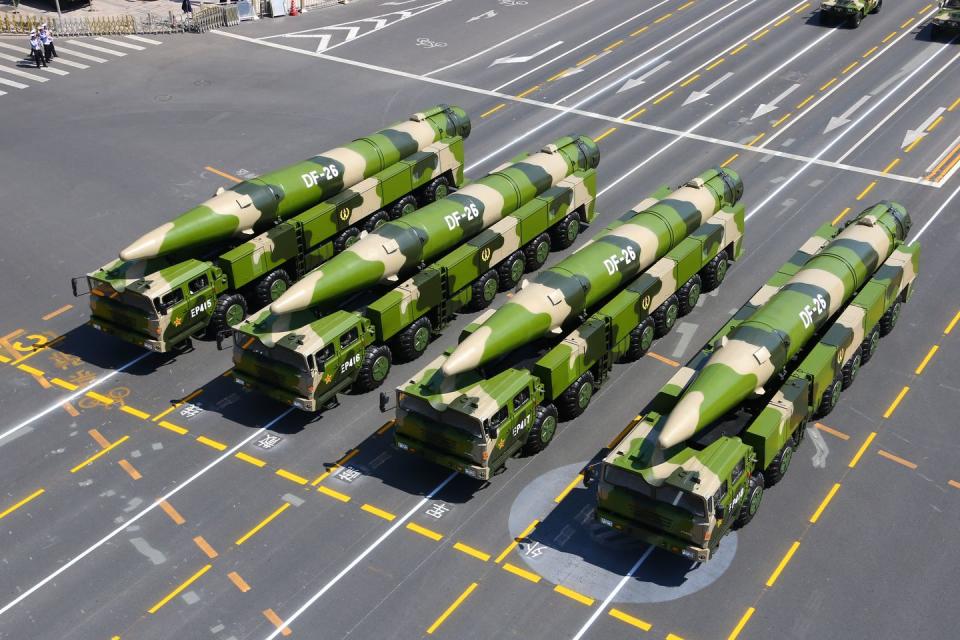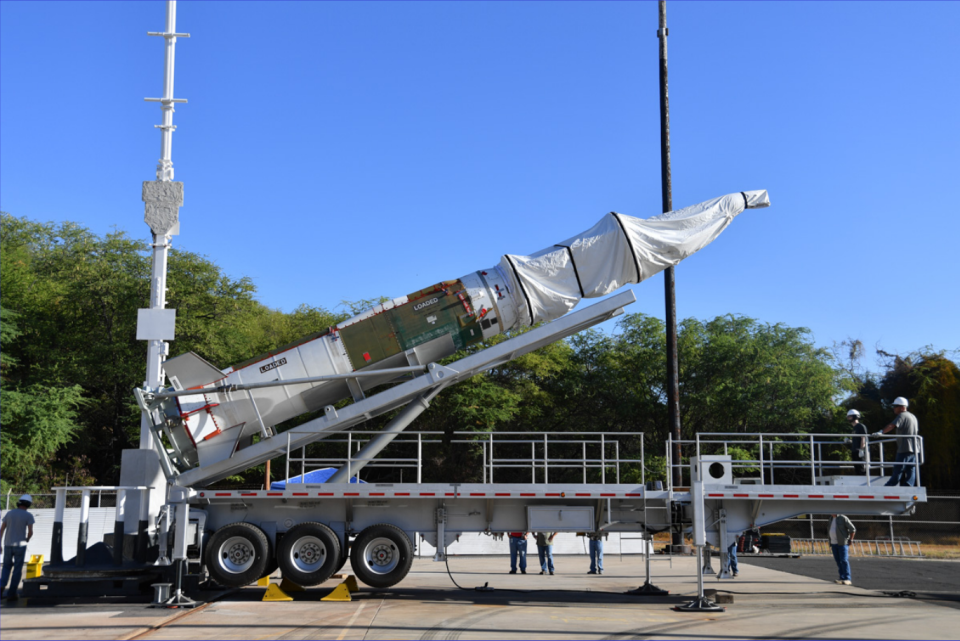The U.S. Is on the Verge of Testing a New Ballistic Missile

A test of a new U.S.-made intermediate range ballistic missile is imminent.
Intermediate range missiles were banned by the 1987 INF Treaty.
The demise of the treaty opens the door to developing new missiles.
The Pentagon is on the verge of testing a new missile that was, until recently, banned by an arms control treaty. Washington’s withdrawal from the INF Treaty, which it had accused Moscow of violating, cleared the way for the development of the new missile. The missile is reportedly set to launch this month, but exactly what it is and how the U.S. came to develop a new missile so quickly is a mystery.
In 1987, the U.S. and Soviet Union for the first time banned an entire class of missiles. The Intermediate Nuclear Forces (INF) Treaty prohibited both countries from owning land-based missiles with ranges from 310 miles to 3,420 miles. A missile with a range short of the restriction, a short range ballistic missile, was legal. A missile with a range beyond the restriction, a intercontinental ballistic missile, was also legal. The treaty removed a large number of missiles that threatened Western Europe and the Soviet Union.

In 2018, the U.S. accused Russia, which remained a signatory of the INF Treaty after the breakup of the Soviet Union, of being in violation of the terms of the treaty. The U.S. and NATO believe that Russia is illegally fielding the 9M729 or Iskander-M long range cruise missile, within the U.S. intelligence community as SSC-8, and to NATO as the “Screwdriver.” The U.S. formally left the treaty in August 2019.
Now, according to Defense News, the U.S. is about to test a new missile previously prohibited by the treaty. The new missile is an intermediate range ballistic missile, or IRBM. IRBMs look like small space rockets, and are launched from a transporter/erector/launcher towed by a tractor trailer. An IRBM sends one or more warheads into low earth orbit, then de-orbits the warheads above the target. The warheads then streak down on the target below at hypersonic speeds.
The U.S. is fielding the new IRBM for several reasons. First, if Russia deployed intermediate range missiles, then the U.S. should deploy its own intermediate range missile to destroy them. Second, arguably it’s not enough to just complain about a new Russian missile and then withdraw from a treaty, the U.S. needs to respond. After all, there is a reason why Russia agreed to ban the missiles: based in Germany, America’s Pershing II IRBM (see top) could reach Moscow in just 6-8 minutes. This unnerved the Soviet leadership, which considered it a possible first strike weapon.

Another reason is halfway across the globe: China, which was not a signatory to the INF Treaty, has a very large arsenal of ballistic missiles armed with both conventional and nuclear warheads, including the DF-26 IRBM. These missiles threaten U.S., Japanese, and other allied military forces scattered across the Asia-Pacific. By deploying its own missiles, the U.S. can deter China from launching its missiles in wartime. If deterrence fails, it can strike back. Washington can base its missiles in Guam or the Aleutian islands, either of which would give limited coverage of targets in eastern China, though there is rumored to be at least one U.S. ally much closer to the Asian mainland that has already agreed to host the missiles.

Ballistic missiles tend to take a lot of time and money to build, so it’s surprising the U.S. is prepared to test a new IRBM just three months after departing the treaty. One option is re-building the Pershing II missile that was scrapped by the treaty. Another, as Defense News notes, could be to use the U.S. Navy’s SM-3 ballistic missile interceptor as a ballistic missile.
Still another option is to use a target missile designed to emulate a IRBM in ballistic missile defense tests as the basis for a real IRBM. Northrop Grumman, for example, builds IRBM targets using solid rocket fuel motors from Orbital ATK’s Orion family of rocket boosters. The motors were originally built for the Pegasus space launch vehicle.
Source: Defense News
You Might Also Like

